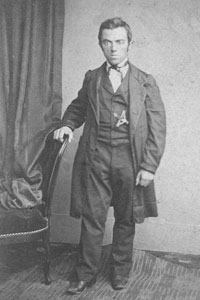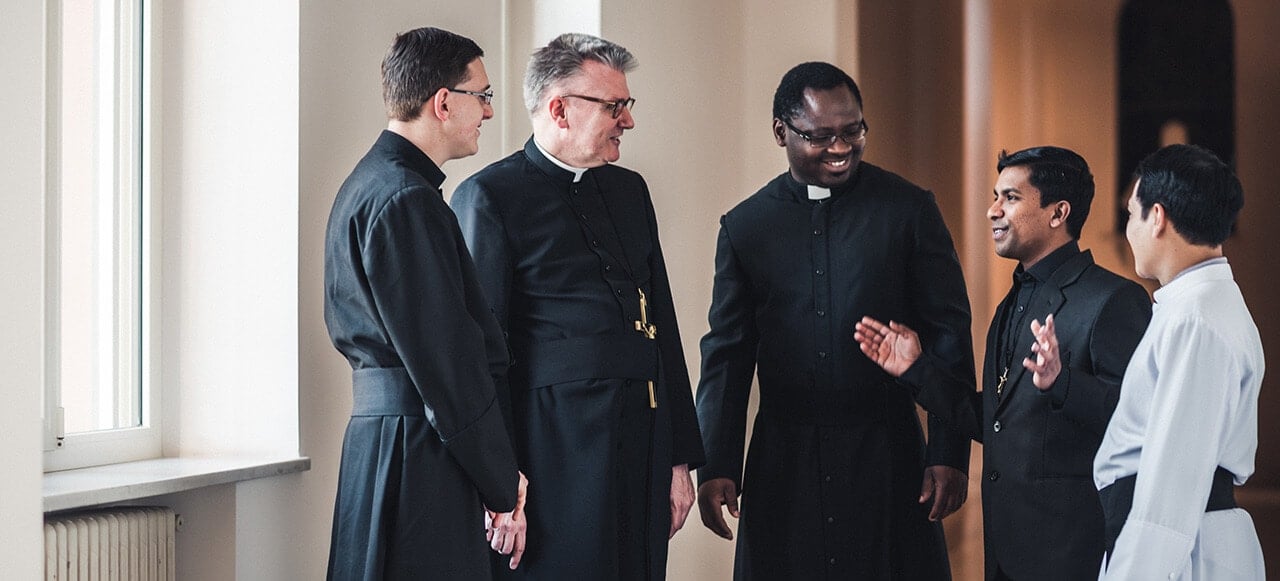
“Célestin was garrisoned at Laval in 1863 when he got smallpox and was placed in bed number 17 at the Saint-Julien hospital. In a state of delirium he tried to escape and was stopped just before leaving the courtyard. As he caught cold during this escapade, his illness worsened and an hour later, about eleven o’clock in the evening, the chaplain anointed him. The soldier was aware only of this first anointing. During the night, he appeared to have died. But at that very moment, without any apparent external signs, he had regained consciousness and would remain aware. Around ten o’clock in the morning, the medical officer came by, examined him and said to the Sister who was on duty: Number 17, dead. Please have him buried.
Deep inside himself Guillet protested:
– But no! You can see that I am not dead. How can you be so hard-hearted as to bury me before my death?
He wanted to shout, move, struggle, but his body remained frozen in rigor mortis. As the Sister prepared him for burial, she noticed a little bit of heat on his back, exactly where the flap of the scapular of Our Lady of Mount Carmel touched him. This coincidence convinced her to wait a little, despite the assurance of another Sister who was very accustomed to distinguishing the signs of death:
– He is dead, no doubt about it, she affirmed.
At that the patient redoubled his protests. But there was no movement.
The following day the doctor reprimanded the nurse:
– Well now Sister! Do you intend to make relics of number 17?
But the sister, still noting the appearance of some warmth, begged the doctor not to require immediate burial and even asked him to again try to revive the dead man. Finally on the eighth morning, the doctor gave in and made an incision on the mouth and gave him a massage. No sign of life appeared. Around six that afternoon, Guillet let out a great cry.
– Number 17 has resurrected, said the other patients to the sister as she returned.
When the major was informed, he ordered a reanimation treatment and the following day, Guillet began to breathe again. But the state of lethargy lasted six more days. Only on the fifteenth day could the resurrected articulate his first words, to which the religious answered, without telling him all the rest – since he had followed in detail all the phases of the drama: It is thanks to your scapular that you were not buried alive.
This dramatic experience allowed Célestin Guillet to take a good look at himself. He felt a keen desire to return again to religious life. While visiting his family he met Bishop Vital Grandin. The bishop of Saint-Albert won him over by his piety and his apostolic zeal. Célestin asked him to take him along at once to his missions, which the bishop accepted to do. With the authorization of the Oblate Superior General, Bishop Grandin sent the ex-soldier to make his second novitiate as an Oblate brother to Caribou Lake, under the direction of the Fr. Alphonse Gasté, who was known as the Moses of the Montagnais. This was in 1870. Brother Guillet would spend thirty years of his life there, using all his talents for the development and material prosperity of this mission. It would be right to call him the Manitou of the place or the guiding spirit of the temporal in the Amerindian sense of the word, and in the French meaning, the jack-of-all-trades. He was the cook, the tailor, the sacristan, the cantor, the organist, a fisherman, a school teacher, accountant, chronicler, etc.
In spite of all kinds of dangers, the rigorous cold, the tiresome trips and the religious indifference of the Amerindian population, Brother could write to Fr. Joseph Fabre, his Superior General: I am so happy to be here in the service of the Good Master and Mary Immaculate that I would not want to change for anything in the world. He died in Edmonton, September 30, 1911.”
André DORVAL, OMI
